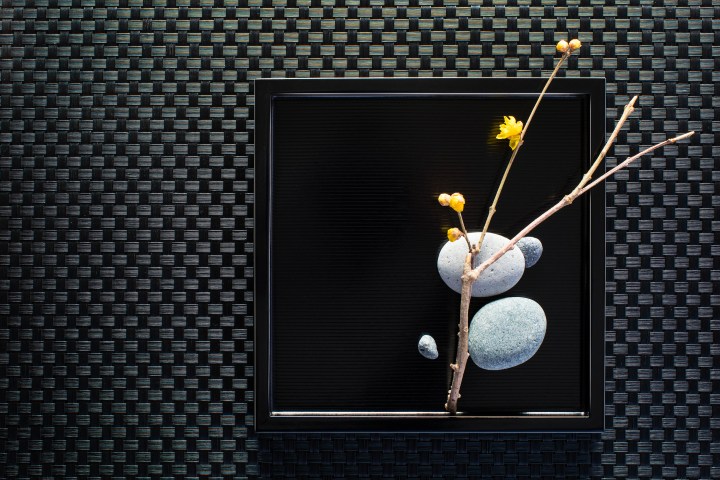How to be your own best friend

People always Cory Muscara me what the biggest benefit has been from his meditation practice. Knowing that he spent six months in silence at a Buddhist monastery, they usually suspect it’s going to be something “cool”—transcending his ego, learning how to levitate, or some sort of psychic powers. In this article, he reveals the surprising answer.
It’s less exciting, I assure you.
The most important thing I’ve gotten from my meditation practice is that I’ve become my own best friend. I actually like myself. Not in an arrogant way; in an appreciative way. I know everything Cory has been through, everything he’s working on, where he falls short, where he tries really hard and still can’t get it right. I have a lot of appreciation for this Cory guy.
It feels good to like myself. Really good.
Because it wasn’t always this way.
I used to place high expectations on myself, and my inner critic was ferocious. I would beat myself up for not getting things right, whether it was something big or small. I didn’t know any different at the time, but looking back, it was much more difficult living that way. I still have expectations and I still make mistakes, but I rarely beat myself up for them anymore. I check in and ask myself how everything is going. Do I need anything? Do I need to reevaluate some stuff? If I notice that I’m more edgy, I might check in and ask, “Is everything all right, man? This isn’t like you. What’s going on?”
It might sound silly, but it’s changed my life. At the end of the day, we have to go through this life alone. We can have great family, friends, and communities to support us in our journey, but only we can experience our thoughts, our emotions, and our pains. Unless we can be our own best companion through that process, we stand in the way of our own happiness.
Imagine this: What would it be like to become your own best friend? To feel cozy in yourself? To actually enjoy being with your own company?
We’re going to look at how this is possible.
There are many ways to be a good friend, but the two that stand out to me are:
- letting a friend know that they’re loved, especially in times of struggle, and
- supporting a friend to grow and experience more happiness.
More often than not, we’re better at being a good friend to other people than being a good friend to ourselves (although some of us certainly have work to do in both departments). In this chapter, we’ll explore how you can develop that friendship with yourself—accepting (and even loving) all of who you are, even the parts you may have disowned.
RECLAIMING YOUR SHADOW
We all have parts of ourselves that we don’t like. These parts could be our grief, pain, trauma, depression, anxiety, fear, deep anger, shame—anything that we think drains our energy and makes our life worse.
There’s an understandable desire to get away from these experiences, to inhabit a mind, heart and soul that is not tethered to such suffering.
To accomplish this, we often ignore, suppress or disown these parts, casting them into the shadows of our awareness. This is why psychologist Carl Jung called them our shadow parts.
Unfortunately, it’s not so easy to get rid of them. The more we push these parts away, the stronger they become.
Have you ever heard of non-Newtonian fluid?
It’s a type of fluid that becomes thicker, or more viscous, under pressure and stress. If you were to fill a pool with it, you could actually run and jump on the surface without falling through. In fact, the harder you press against it, the stronger it becomes. But the moment you relax and stand still, the surface softens as if it were any other liquid. Check out a YouTube video to see for yourself.
Our shadow parts are like non-Newtonian fluid. They’re fortified by our struggle, our frustration, our resistance. The more we fight or suppress them, the stronger, bigger and more destructive they become. But as soon as they are met with softness, they too soften, sometimes becoming our greatest allies.
In other words, the best way to not suffer from our shadow is to be at peace with it.
We often don’t realize how much of our stress, anxiety, depression, low energy, and emotional heaviness is coming from constantly needing to regulate and fight our shadow parts, almost always happening at a subconscious level.
To help alleviate this tension and heaviness, I’ve written out a structured practice you can use to start this journey toward reclaiming your shadow and becoming your own best friend. It is a combination of techniques from Ericksonian hypnosis, compassion-based meditation, Chöd meditation (an ancient Tibetan Buddhist practice), and Lama Tsultrim’s book Feeding Your Demons. I have also included a recording of this in the resources, if you’d prefer to go through it with guidance (www.stopmissingyourlife.com/resources).
I recommend clearing at least a half hour for this meditation, more if you can spare, so you can process and journal afterward. The practice itself doesn’t need to take longer than ten to fifteen minutes. Although you may not choose to do the practice now (which is understandable), still read through the steps and see if you can feel what it might be like to take this approach to those parts you’ve most struggled with.
STEP 1: PREPARATION
- Find a relaxed, seated posture (you can lie down if you don’t think you’ll fall asleep). You want to feel comfortable and safe for this meditation, so feel free to use pillows, blankets, or even stuffed animals if it helps you feel more settled.
STEP 2: FIND THE SHADOW
- Identify the shadow part you would like to work on. What’s a part of you that you struggle with or don’t like? Once you’ve identified this part, see if you can feel where you experience it in your mind and body. Get a sense of its presence, location, boundaries, and qualities.
STEP 3: GIVE IT FORM
- Once you have a sense of your shadow, it’s time to give it more form. If this shadow were to be a particular colour, shape, sound, or substance—like a dark cloud, a yelling voice, or flimsy reed — what would that be? If an image or character comes to mind, like a mangy dog, a helpless child, or an unforgiving dictator, you can use that, too.
STEP 4: CREATE TRUST
- Once the shadow has a form, imagine that you are sitting down and meeting with it. You can imagine an actual bench in your mind that you and the shadow are sitting on, or you can imagine that the shadow is sitting in front of you.
- Make sure both you and the shadow feel comfortable with the arrangement (you may need more or less space from each other), and let the shadow know (through words and body language) that you are not here to hurt it or get rid of it. Rather, you want it to feel safe.
STEP 5: BECOME CURIOUS
- Ask the shadow: What is it like to be you? What is something about you that I don’t know? How are you trying to help me? Just listen to the responses, curiously, and thank it for sharing.
- Optional: If you feel comfortable doing so, you can associate into the shadow—i.e., imagine you are talking as the shadow—so that you can respond to the questions from its perspective. If you’re sitting, you might consider switching your position so that you’re facing your original seat.
STEP 6: FIND THE POSITIVE INTENTION
- Let the shadow know that you trust it is trying to help you in some way, and ask if it could share its positive intention. “What are you trying to help me learn, understand, or experience? How are you trying to serve or protect me?”
- Optional: Associate into the shadow to respond with its positive intention.
STEP 7: SHOW APPRECIATION
- Think to a time you tried to help someone but you felt like that person dismissed you. If you can’t think of an example, you can imagine what this would be like. Now consider that this is how your shadow must feel. It’s been trying to help you, and your response has been to shun or dismiss it. But now that you see it more clearly—if you’re willing and ready—you can thank the shadow for doing its best to help you, even if you don’t fully understand its motive.
STEP 8: MAKE A CONNECTION
- If you feel ready, try to make a physical connection with the shadow from a place of compassion. This is a first step toward feeling what it’s like to embrace one another. You can imagine giving it a hug or holding it gently in your hands. It’s okay to go slow. Remember, you’ve spent a lot of time avoiding this shadow, so it may be difficult to get close at first; you don’t need to rush the process.
STEP 9: MAKE AN OFFERING
- Ask the shadow: What do you need? How can I help you? What can I give you?
- Optional: Associate into the shadow to respond, “What I need from you is . . . ”
- Once you get a response, imagine yourself offering this to the shadow and see the shadow receive this gift from you.
STEP 10: INVITE THE SHADOW INTO THE LIGHT
- As you sit, imagine the many different parts that create who you are—the parts that are loving, positive, protective, sad, curious — a whole community of parts, all with different forms. Notice how most of those parts are in the light, and the shadow parts are in the dark. Imagine all the different parts of you inviting this particular shadow part into the light, embracing it as a part of the community of you, to be seen, appreciated, and accepted.
STEP 11: INTEGRATION
- Once the shadow has been welcomed into the light, imagine all of these parts dissolving into One, creating an embodied sense of wholeness.
- Rest in an awareness of the whole, feeling the goodness of it as you breathe and relax. Take however long you need before closing the meditation and opening your eyes.
However you decide to engage with this meditation, guided or selfguided, be sure to practice self-care, and trust your own intuition if any of the steps feel like “too much, too soon.” When working with these shadows, we’re working with some very deep parts of ourselves, many of which we’ve spent a lifetime shunning and resisting. We don’t need to heal everything in one session.
Remember, this practice is about befriending and integration, not purging. It’s a radical act of kindness to embrace the many dimensions that make up you. The journey is not always easy, but each step we take in the direction of integration is a step closer to deep fulfillment, self-love and wholeness.
Many of us live on autopilot, often so guarded that we don't experience the potential richness that life has to offer. How can we find real happiness amidst the chaos, where we don't reach our life's end and feel we missed out?
In Stop Missing Your Life, mindfulness teacher Cory Muscara takes us on a journey into the heart of what is required for real change, growth, and happiness. He exposes how the phrase "be present" has become little more than a platitude, imbued with the misguided message to be present just for the sake of being present, and reveals how to achieve true Presence: a quality of being that is unmistakably attractive about a person, and one that only comes when we've peeled back the layers of guarding that prevent us from being our full, honest, and integrated selves in the world.
Muscara shows how we build internal walls, what he describes as a "Pain Box" inhibiting us from living a deeply connected and meaningful life. He offers a four-part FACE model (Focus, Allow, Curiosity, and Embodiment) that helps chip away at those walls and builds our capacity to experience the richness of our lives. Stop Missing Your Life ultimately teaches how we can find peace in the chaos and become better people for our family, our communities, and our world.








